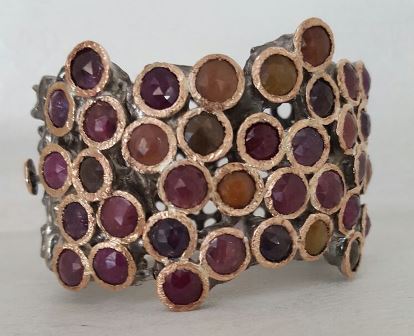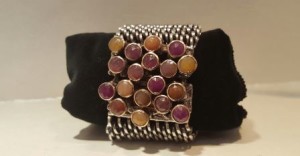Sapphire: the sky in a gem

Sapphire closes a first cycle of posts dedicated to the stones I love to work with. My intent was not to create an encyclopedia of gems but only to give you some hints and tell fascinating facts about the world surrounding jewelry and gemstones.
Sapphires are as precious and admired as little known. They are often associated exclusively with their blue color and frequently considered challenging gems to wear, reserved for important occasions only.
Of course, I take the full responsibility to say otherwise demonstrating that we are far away from both of the above clichés!
If the best-known color is sky blue, we also find orange, sunset purple and dawn pink. There is no need to be the Princess of Wales or the Duchess of Cambridge to wear it (the reference is to the engagement rings of the splendid Diana Spencer and Kate Middleton). Let us begin with small steps and discover something more.
Etymology
As reported by a well-known Etymological Dictionary, the name of our gem could come from the Hebrew word סַפִּיר (sappir) which means ‘beautiful’ referring both to the sapphire and to all blue gems or from Sanskrit शनिप्रिय (Śanipriya) which referred precisely to the precious dark gems sacred to one of the ten planets of Hindi astrology, शनि (shani = Saturn) and प्रिय (priyah = precious)meaning therefore ‘sacred to Saturn’.
Mineralogy
Like ruby, sapphire belongs to the family of corundum. These stones are characterized by excellent hardness (9 on Mohs scale), just one step below diamonds.
They are composed of pure aluminum oxide plus small quantities of other elements responsible for the gem’s color, such as iron, titanium and chromium. The higher the percentage of iron or titanium is, the darker the stone is.
The colors range from white (called ‘Leuco sapphire’), to cornflower blue, yellow, pink, green, purple, etc.
There are rare and precious shades like the orange with a delicious pink undertone, called Padparadscha (meaning ‘lotus flower’), due to the presence of chromium oxides and vanadium. Very famous is the intense blue shade with a very light violet undertone, called Kashmir.
The inclusions of pyrite, rutile, plagioclase, hematite, spinel, etc. are very frequent and make these gems even more charming.
There are also ‘star sapphires’ exhibiting a phenomenon known as asterism. These gems contain intersecting needle-like inclusions that cause the appearance of a star-shaped pattern.
As for diamond, there is also a raw and massive variety (icy) for sapphire, the one I love to use for my creations.
Origin and mining
The abovementioned colors are closely linked to their mining locations.
The cornflower blue is typical of Myanmar mines. The violet blue and pink (due to chromium) are found in Sri Lanka, the Country with the most ancient mines. The night blue one in Thailand. The greenish blue-black in Australia. Other deposits are located in Brazil, Cambodia, China, Colombia, Finland, Kenya, Madagascar, Nigeria, Tanzania, Zimbabwe.


